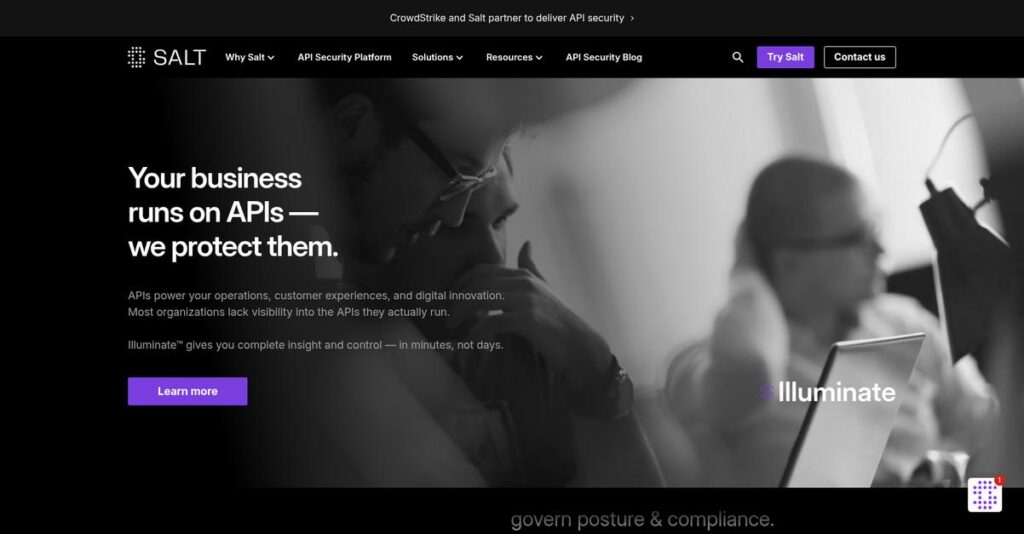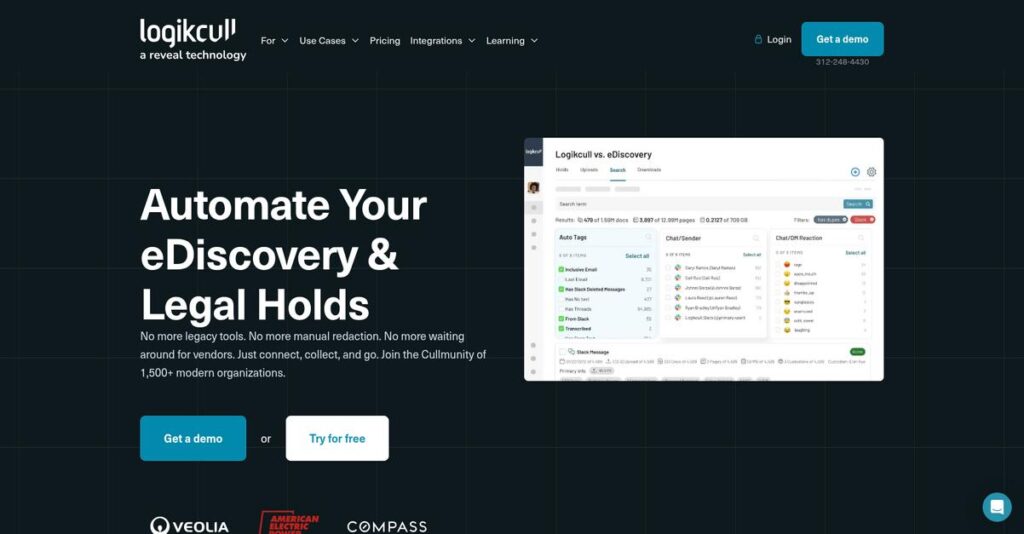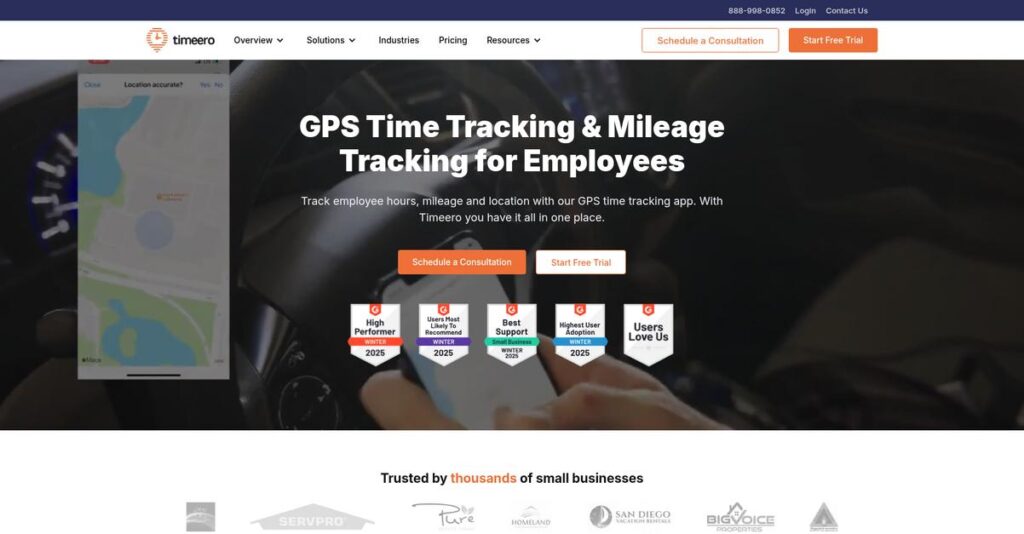APIs are your biggest security blind spot.
If you’re researching Salt Security, you’re likely struggling to gain real visibility into all your APIs and prevent growing risks from shadow or vulnerable endpoints.
But let’s be real—the hardest part is that your attack surface keeps expanding every day and you can’t keep up with new, unmonitored APIs that might expose sensitive data.
Salt Security solves this using AI-driven discovery, threat detection, and context-rich protection across the entire API lifecycle—so you actually get eyes on what matters, catch attacks before damage is done, and help developers fix issues faster than legacy tools.
In this review, I’ll show you how Salt Security enables complete API protection from discovery to real-time defense, and why most traditional security approaches just can’t keep up.
You’ll find out how Salt Security works in practice, which features set it apart, pricing models, and the top alternatives—so in this Salt Security review, you get actionable insights for your software evaluation.
By the end, you’ll have the features you need to secure your APIs and the confidence to make the best choice for your team.
Let’s dive into the analysis.
Quick Summary
- Salt Security is an AI-driven API Protection Platform that secures APIs across their lifecycle by discovering, detecting, and preventing sophisticated API attacks.
- Best for security teams in mid-market and enterprise companies relying heavily on cloud-native APIs and needing thorough visibility and threat prevention.
- You’ll appreciate its patented AI and machine learning that detect “low-and-slow” API attacks and provide actionable remediation insights.
- Salt Security offers custom pricing based on API call volume with demos available, requiring direct contact for detailed quotes and trial options.
Salt Security Overview
Salt Security has focused purely on API security since its founding in 2015. Based in Palo Alto and Israel, their mission is tackling what has become the primary attack vector for modern applications.
What I find interesting is their clear market focus. They specifically target mid-market to enterprise companies with modern, cloud-native architectures, rather than trying to be a generic security tool for every business out there.
Their recent partnership with CrowdStrike shows a smart integration strategy. The impact of this cloud-native push will become clearer as we go through this Salt Security review.
- 🎯 Bonus Resource: Speaking of security for your team, my guide on best eye protection software can safeguard wellbeing.
Unlike competitors that analyze single transactions, Salt Security’s core advantage is its patented AI for behavioral analysis. I believe this focus helps spot the sophisticated, low-and-slow attacks that traditional security tools can easily miss.
They work with many large enterprise and mid-market organizations, particularly those in finance, tech, and retail that are heavily invested in API-driven cloud applications for their core business operations.
From my analysis, their business strategy centers on using deep, AI-driven context to secure the entire API lifecycle from discovery to runtime. This approach directly addresses the critical visibility and protection gaps you’re likely facing.
Now let’s examine their platform’s capabilities.
Salt Security Features
Worried about sneaky API attacks exploiting your data?
Salt Security features offer robust, AI-powered API protection that covers your entire API lifecycle. Here are the five main Salt Security features that provide comprehensive API security.
1. Comprehensive API Discovery
Can’t see all your APIs, including the hidden ones?
Many organizations lack full visibility into their API landscape, leaving shadow and zombie APIs open to attack. This expands your attack surface significantly.
Salt Security continuously monitors API traffic to automatically identify all APIs, even those you didn’t know existed. From my testing, this feature excels at unearthing misconfigurations and sensitive data exposure points. This visibility is crucial for understanding your true risk.
This means you can finally get a complete picture of your API attack surface and stop flying blind.
2. API Posture Governance
Are you deploying vulnerable APIs without knowing it?
Finding API vulnerabilities only after deployment is too late, leading to costly fixes and potential breaches. This reactive approach creates unnecessary risk.
Salt Security proactively identifies weaknesses in your APIs, even before they hit production, which I found to be a significant “shift-left” advantage. This feature helps you harden your APIs early by highlighting potential weaknesses and data exposure issues. It guides developers to build more secure APIs from the start.
So you can release APIs with confidence, knowing they’ve been vetted for security vulnerabilities beforehand.
- 🎯 Bonus Resource: Speaking of data security, my guide on best PDF encryption software explores additional ways to protect sensitive documents.
3. AI-based Threat Protection
Are subtle, slow API attacks slipping past your defenses?
Traditional security tools often miss “low-and-slow” attacks because they analyze individual transactions, not long-term behavior. This leaves you vulnerable to sophisticated attackers.
Salt Security uses patented AI and machine learning to baseline legitimate API behavior, detecting anomalies over time that indicate an attack. Here’s what I found: this capability identifies attackers during reconnaissance, stopping them before they can achieve their goals. It builds deep context across millions of APIs and users.
This means you get advanced protection against sophisticated threats that other tools simply can’t catch.
4. Real-time Attack Prevention and Runtime Protection
Worried about active attacks compromising your live APIs?
Once an attacker is detected, you need immediate action to prevent data breaches or account takeovers. Delayed responses can lead to significant damage.
Salt Security actively blocks threats the moment they are detected, preventing attackers from reaching their objectives. This is where Salt Security shines; it integrates with existing inline devices to enforce commands, safeguarding your APIs during active execution. It stops malicious API usage in its tracks.
The result is real-time safeguarding, giving you the ability to prevent data exfiltration and account takeovers as they happen.
5. Actionable Remediation Insights
Struggling to translate security findings into developer action?
Identifying vulnerabilities is only half the battle; developers need clear, actionable guidance to fix them effectively. Vague reports slow down the remediation process.
Salt Security provides detailed remediation guidance, capturing insights from attacker activities to inform your development teams. While some users want more direct code snippets, the platform does provide clear insights. This feature helps close the loop in your API security journey, enabling continuous improvement based on real-world attack data.
This means your team can efficiently harden APIs, continuously improving your overall security posture based on actual threat intelligence.
Pros & Cons
- ✅ Excellent comprehensive API discovery, including shadow APIs.
- ✅ AI-driven behavioral analysis excels at detecting complex attacks.
- ✅ Strong real-time attack prevention and runtime protection capabilities.
- ⚠️ Some users desire more direct code snippets for remediation.
- ⚠️ Initial learning curve for less experienced security personnel.
- ⚠️ Integration nuances reported with certain SIEM logging systems.
You’ll actually appreciate how these Salt Security features work together to create a robust, end-to-end API security solution that’s designed to adapt to modern threats.
Salt Security Pricing
Confused about what you’ll actually pay monthly?
Salt Security pricing is custom, meaning you’ll need to contact sales for a quote tailored to your specific API security needs.
Cost Breakdown
- Base Platform: Custom quote (Contact sales)
- API Calls: Varies by tier (e.g., Startup: 5M/month, Enterprise: 100M/month)
- Deployment: Varies by environment (cloud-native focus)
- Support: Included with console access
- Key Factors: API usage scale, deployment environment, required features
1. Pricing Model & Cost Factors
Understanding Salt Security’s cost structure.
Salt Security employs a custom pricing model without publicly listed tiers or rates. What I found regarding pricing is that costs are heavily influenced by your API call volume (e.g., 5 million vs. 100 million per month for Startup vs. Enterprise tiers) and deployment complexity. Additional features and integrations also play a role.
From my cost analysis, this means your budget gets a solution precisely matched to your operational scale and unique security requirements.
- 🎯 Bonus Resource: Speaking of managing data, my guide on modernizing your records covers tools for organizational efficiency.
2. Value Assessment & ROI
Is this security investment worthwhile?
Salt Security’s AI-powered API protection helps prevent costly data breaches and reputational damage, offering significant ROI, especially given the rising threat landscape for APIs. What makes their pricing valuable is how it protects critical business logic and sensitive data, far exceeding what generic firewalls can provide against modern API attacks.
This means your security spend translates directly into reduced risk and business continuity, saving you potential millions in breach costs.
3. Budget Planning & Implementation
Consider your total cost of ownership.
While specific pricing isn’t public, expect your total cost of ownership to include the custom subscription and potential integration efforts with your existing cloud environments. From my research, their platform integrates seamlessly with AWS and Google Cloud, simplifying deployment but still requiring your internal team’s time.
So for your business, plan to allocate resources for initial setup and ongoing management to fully leverage Salt Security’s advanced capabilities.
My Take: Salt Security’s custom pricing is typical for enterprise-grade API security, ideal for mid-market and enterprise organizations prioritizing tailored, robust protection for their extensive API estates.
The overall Salt Security pricing reflects specialized enterprise value for critical API protection.
Salt Security Reviews
What do real customers actually think?
This section provides balanced analysis of Salt Security reviews, drawing insights from real user feedback to help you understand common experiences.
1. Overall User Satisfaction
Users seem highly satisfied with Salt.
- 🎯 Bonus Resource: While we’re discussing various software solutions, understanding best sports league software is equally important for managing participation.
From my review analysis, Salt Security reviews show consistent positive feedback, particularly on G2 where users praise its intuitive nature and effectiveness. What impressed me about user feedback is how its ability to prevent breaches is highlighted, showing strong confidence in its core function.
This suggests you can expect a reliable and effective API security solution.
2. Common Praise Points
Visibility and support consistently shine.
Users frequently praise Salt Security’s comprehensive API discovery, including shadow APIs, which many previously lacked. From my analysis of customer feedback, the responsive and hands-on support team also stands out, making implementation and ongoing use smoother according to reviews.
This means you’ll gain crucial API visibility and have excellent vendor support.
3. Frequent Complaints
Feature maturity and integrations come up.
While generally positive, some Salt Security reviews mention the platform’s “nice-to-have” features are still developing. What I found in user feedback is how specific SIEM logging and gateway integration nuances sometimes require extra effort for correct reporting.
These limitations appear to be minor issues rather than significant deal-breakers.
What Customers Say
- Positive: “The Salt Security is the creme de la creme of API security tools. It does so much, and is a valuable tool in assisting with keeping our APIs safe.” (G2 user)
- Constructive: “The integration part could be a bit extended.” (PeerSpot user)
- Bottom Line: “Salt isn’t trying to solve every problem; they’ve found a niche and have focused on tightly sealing that gap.” (G2 user)
Overall, Salt Security reviews show high user satisfaction regarding its core capabilities and strong support.
Best Salt Security Alternatives
Navigating the competitive API security market?
The best Salt Security alternatives include several strong options, each better suited for different business situations and priorities within the API security landscape.
1. Wallarm API Security Platform
Need active blocking across your full application portfolio?
Wallarm excels when your primary need is immediate, active threat blocking for APIs, web apps, and microservices with flexible deployment options. From my competitive analysis, Wallarm offers robust real-time blocking capabilities, a key differentiator for organizations prioritizing instant mitigation across their entire app stack.
You should choose Wallarm if your critical concern is active, real-time blocking across your diverse application portfolio.
2. Noname Security
Prioritizing comprehensive API discovery and testing?
Noname Security works well when you require strong capabilities in uncovering rogue/shadow APIs and extensive security testing across hybrid environments. What I found comparing options is that Noname emphasizes broad API inventory management, providing a holistic view beyond runtime protection, a useful alternative.
Consider Noname if robust API discovery, posture management, and diverse environment support are your top needs.
- 🎯 Bonus Resource: Speaking of organization, my guide on document processing software can help streamline your digital assets.
3. Akamai API Security
Dealing with high API traffic and DDoS concerns?
Akamai might be a better fit if your organization faces significant DDoS attack risks and requires advanced API throttling to manage high volumes. From my analysis, Akamai offers superior DDoS protection and traffic control, ensuring performance and availability for high-traffic API scenarios, an important alternative consideration.
Choose Akamai when DDoS mitigation and efficient API traffic management are more critical than behavioral logic analysis.
4. Traceable AI
Requiring deep visibility into complex API interactions?
Traceable AI excels if your organization needs extensive distributed tracing for profound insights into API traffic flows and dependencies. From my competitive analysis, Traceable AI provides deep contextual API visibility, making it a strong alternative for understanding complex microservices architectures.
You might opt for Traceable AI when gaining extensive visibility into API traffic and dependencies is paramount.
Quick Decision Guide
- Choose Salt Security: Deep behavioral analysis for subtle, multi-step API attacks
- Choose Wallarm: Active real-time blocking across entire application portfolio
- Choose Noname Security:1 Strong API discovery, testing, and posture management
- Choose Akamai API Security: Advanced DDoS protection and high-traffic management
- Choose Traceable AI: Extensive distributed tracing and API traffic visibility
The best Salt Security alternatives depend on your specific security priorities and operational context, offering diverse strengths.
Salt Security Setup
Worried about complex API security deployment?
A Salt Security setup offers a generally straightforward deployment, often completing in minutes for the core platform, though integrations require more planning.
1. Setup Complexity & Timeline
This isn’t an overnight flick-of-the-switch.
While the core platform deploys quickly as SaaS, the real implementation time involves integrating with your existing API gateways and security tools. From my implementation analysis, realistic timelines account for these integration points, as each connection can add unique configuration challenges.
You’ll need to allocate time for detailed planning, especially for mirroring API traffic and ensuring comprehensive log ingestion.
- 🎯 Bonus Resource: If you’re also looking into security tools, my article on endpoint management software covers comprehensive options.
2. Technical Requirements & Integration
Expect some critical technical groundwork for full functionality.
Your team will need to manage integrations with tools like Apigee or Kong, plus ensure robust data ingestion of API traffic logs for analysis. What I found about deployment is that the platform’s effectiveness depends on data quality, requiring proper log formatting and completeness from your existing infrastructure.
Plan for IT readiness, focusing on network log access and aligning your environment for optimal API discovery and data flow.
3. Training & Change Management
User adoption primarily involves security team familiarization.
While the product is intuitive, security teams might experience an initial learning curve for optimal setup and advanced configuration given the focus on AI/ML. From my analysis, comprehensive documentation and responsive vendor support significantly ease this learning process.
Invest time in understanding the AI-driven behavioral analysis to maximize the platform’s threat detection and prevention capabilities.
4. Support & Success Factors
Vendor support is a major asset here.
The Salt Security team consistently receives high praise for their hands-on support during setup, technical integrations, and ongoing use. From my analysis, this responsive and dedicated assistance is a critical success factor, preventing common deployment roadblocks.
Prioritize leveraging their customer success teams and technical experts to navigate integration nuances and ensure a robust, effective deployment.
Implementation Checklist
- Timeline: Weeks, depending on integration complexity
- Team Size: Security engineers, network ops, and API owners
- Budget: Primarily software, minimal direct implementation costs
- Technical: API gateway/tool integration, comprehensive log ingestion
- Success Factor:1 Close collaboration with Salt’s support team
Overall, a Salt Security setup is relatively quick for the core platform, but successful implementation hinges on effective integrations and leveraging vendor support.
Bottom Line
Is Salt Security the right fit for you?
My Salt Security review demonstrates its robust value for organizations with significant API reliance, offering a specialized and intelligent solution to secure this critical attack surface.
1. Who This Works Best For
API-heavy organizations seeking advanced threat protection.
Salt Security works exceptionally well for mid-market and enterprise organizations with cloud-based architectures and extensive API usage. What I found about target users is that companies with sensitive data and digital transformation initiatives will particularly benefit from its proactive defense against sophisticated API attacks.
You’ll find success here if your current security tools struggle to detect subtle, multi-step API business logic flaws.
2. Overall Strengths
AI-driven API discovery and behavioral analysis excel.
The software succeeds through its patented AI and machine learning capabilities, providing deep API discovery, real-time attack prevention, and valuable remediation insights. From my comprehensive analysis, its ability to detect “low-and-slow” business logic attacks is a standout feature that sets it apart from traditional security solutions.
These strengths ensure your organization gains unparalleled visibility and defense against the evolving landscape of API threats.
3. Key Limitations
Pricing transparency and developer guidance need improvement.
While powerful, Salt Security lacks publicly available pricing, requiring direct sales engagement, and some users desire more direct, actionable code-level remediation guidance for developers. Based on this review, integrating with existing SIEMs can sometimes present nuances, requiring careful configuration to ensure unique API reporting.
These limitations are largely manageable trade-offs for its specialized capabilities, but you should factor them into your evaluation process.
4. Final Recommendation
Salt Security earns a strong recommendation.
You should choose this software if your organization needs a dedicated, intelligent API security solution that excels at behavioral analysis and complex threat detection. From my analysis, your success will depend on your organization’s high volume of API usage and its commitment to proactive API security investments.
My confidence level is high for enterprises prioritizing comprehensive API security in their cloud-native environments.
- 🎯 Bonus Resource: While we’re discussing enterprise security, understanding the value of financial services software is equally important for many businesses.
Bottom Line
- Verdict: Recommended
- Best For: Mid-market and enterprise organizations with extensive API usage
- Business Size: Companies with significant cloud-based applications and microservices
- Biggest Strength: AI-driven API discovery and advanced behavioral threat detection
- Main Concern: Lack of public pricing and some user desire for more direct dev guidance
- Next Step: Contact sales for a personalized demo and pricing discussion
This Salt Security review offers strong guidance for securing your API landscape, providing confidence in your decision-making process for advanced API protection.






